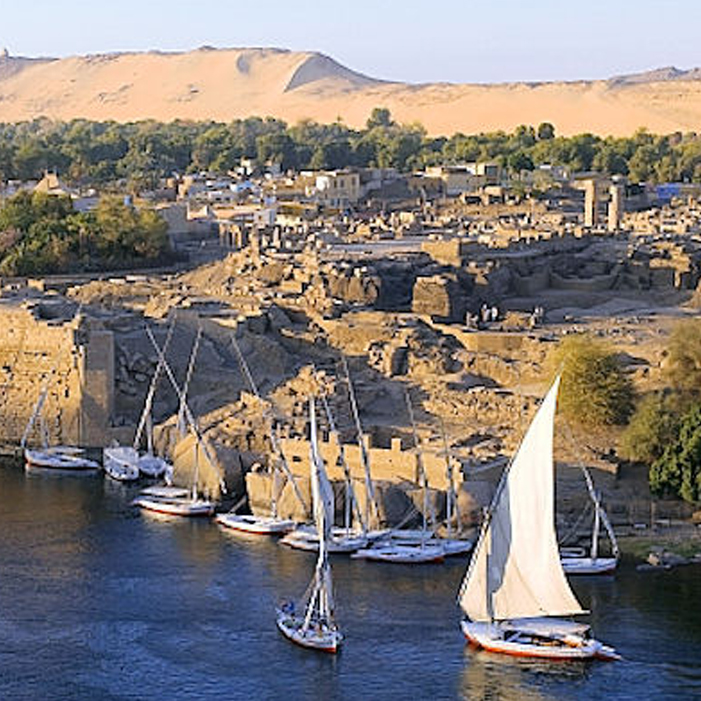
Archaeological Mission at Elephantine (Aswan – Egypt)
Director of the mission: C. von Pilgrim (Swiss Institute of Cairo)
To find out more about the mission, see: https://swissinst.ch/html/forschung_neu.html
About the site
Since autumn 2000, after various archaeological excavation campaigns started in the early 1970s, the Swiss Institute, together with the Supreme Council of Antiquities Aswan, has been carrying out an extensive and long-term research project in the city of Aswan
The situation of the ancient settlement area on the east bank of the Nile in the cataract area can only be understood in combination with the city on the island of Elephantine. An excellent stratigraphic sequence in the Pharaonic period contrasts with very incomplete findings in Elephantine for the period from the Egyptian Late Period to the Islamic period. It is within this town that a house (H55) was recently discovered which housed a wood workshop, probably dedicated to the manufacture of bows and arrows, which is currently being studied. Moreover, it is near the temples dated to the 30th dynasty that a layer of wood chips was discovered, probably waste wood, whose analysis will allow to specify which species were worked there and to understand their use.
Wood study
Following the discovery of House 55 in 2018, the first study season of the wooden archaeological remains found in this structure took place in February 2020. This building is especially important since it was the site of several activities relating to wood craftsmanship and the archaeological contexts are well-dated. It is therefore an exceptional source of information, potentially shedding light on artisanal practices and economic networks related to the exploitation and use of wood in Egypt. With this in mind, the aims were to undertake an anatomical examination of all of the wooden objects found in the different rooms in order to identify the different types of wood used; to clarify the function of certain enigmatic objects; and to try to provide new insight into the activities taking place in the house. Preservation of the objects was also a priority and therefore in situ conservation of all the wood used during the occupation and use of this space, including tools, pruning falls, pieces of furniture, fuel in bundles and roof beams, was carried out.
Continuation of the study of the wood from House 55 is essential as the charcoal found in the house can provide important information that will complement these initial observations. In addition, experimental archaeology would be very useful to test the effectiveness of wooden tools for making bows.
More generally, the scientific potential of the wooden material discovered in the town of Elephantine is exceptional and further research is needed. As an example, the analysis of the dozens of pruning falls discovered in a second workshop (H210) dated to Dynasty 30 and linked to one of the city’s temples should provide unique information on the use of the wood species present throughout the stratigraphy of the 30th dynasty.
Medjehu members involved:
Gersande Eschenbrenner Diemer, Egyptologist/Wood anatomist
Connected projects:
Studying wood networks and craft in the First Cataract area.
Apri un sito e guadagna con Altervista - Disclaimer - Segnala abuso